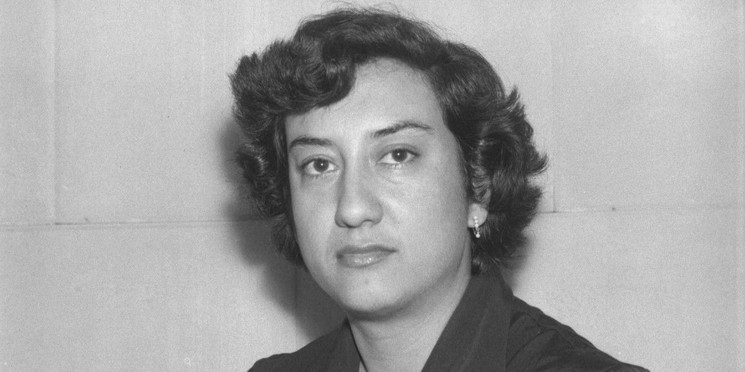
Biography
Mexican artist Lilia Carrillo was a painter and a set designer who belonged to the Generación de la Ruptura (Breakaway Generation), which stood separate from the Mexican School of Painting. Trained in the purely traditional painting style, her work evolved over time, and she became the representative of the Art Informel movement. Throughout her career, the artist often struggled to survive even though she exhibited in numerous major cities all around the world, including Mexico City. Bogota, Tokyo, New York, Washington DC, Lima, Madrid, and Sao Paulo, to name a few.
Lilia Carrillo García was born in 1930 in a household full of artists, intellectuals, and poets. Thus from a young age, she quickly realized she wished to be a painter. She received her first education from an artist Manuel Rodríguez Lozano, who her mother hired. In 1947 with his help she eventually entered the Escuela Nacional de Pintura, Escultura y Grabado "La Esmeralda" where she was mentored by the renowned artist Rodríguez Lozano. At school, she was educated in the style of the Mexican School of Painting which was purely academic. During this time, she suffered a severe injury to the spine after a tragic fall from the scaffolding at the Monastery of San Diego, where she was painting a mural.
The most significant event that significantly impacted Carrillo's artistic expression was her trip to Paris. In 1953 she received a scholarship and enrolled in the Académie de la Grande Chaumière. During her time in France, she discovered different art movements that opened her eyes to unlimited possibilities, such as Cubism, Expressionism, Abstract art, and Surrealism.
The artist had her first major solo exhibition in 1954 at the Maison du Mexique and the Foreign Artists Exhibition in Paris. After returning to Mexico, she became a teacher. She showcased her work at the Galería Juan Martin and the Galería Antonio Souza. As a member of the Generación de la Ruptura, Carrillo had trouble finding a mainstream venue that would exhibit the work. Unfortunately, this period was financially very tough for the artist, and to survive, she began creating folk and handcrafted art. Yet even through these turbulent times, she had two major exhibitions – in 1960 at the Gallery of the Pan American Union in Washington, D.C., and a year later at VI Tokyo Biennale. In 1960 Lilia Carrillo created several set and costume designs for several productions by director Alexandro Jodorowsky including the .
In an effort to create a venue for the unpopular members of Generación de la Ruptura group, Carrillo joined forces with fellow artists Gerzso and Manuel Felguérez, Juan Soriano, and Rufino Tamayo and founded the Galería Antonio Souza. In 1970 she suffered a spinal aneurysm, probably due to a fall when she was younger and had to stop painting for a time. After three years, she slowly picked up the brush again. She created several paintings for the Museo de Rufino Tamayo and the Museo de Arte Moderno. Lilia Carrillo Passed away in 1974.
Nationality